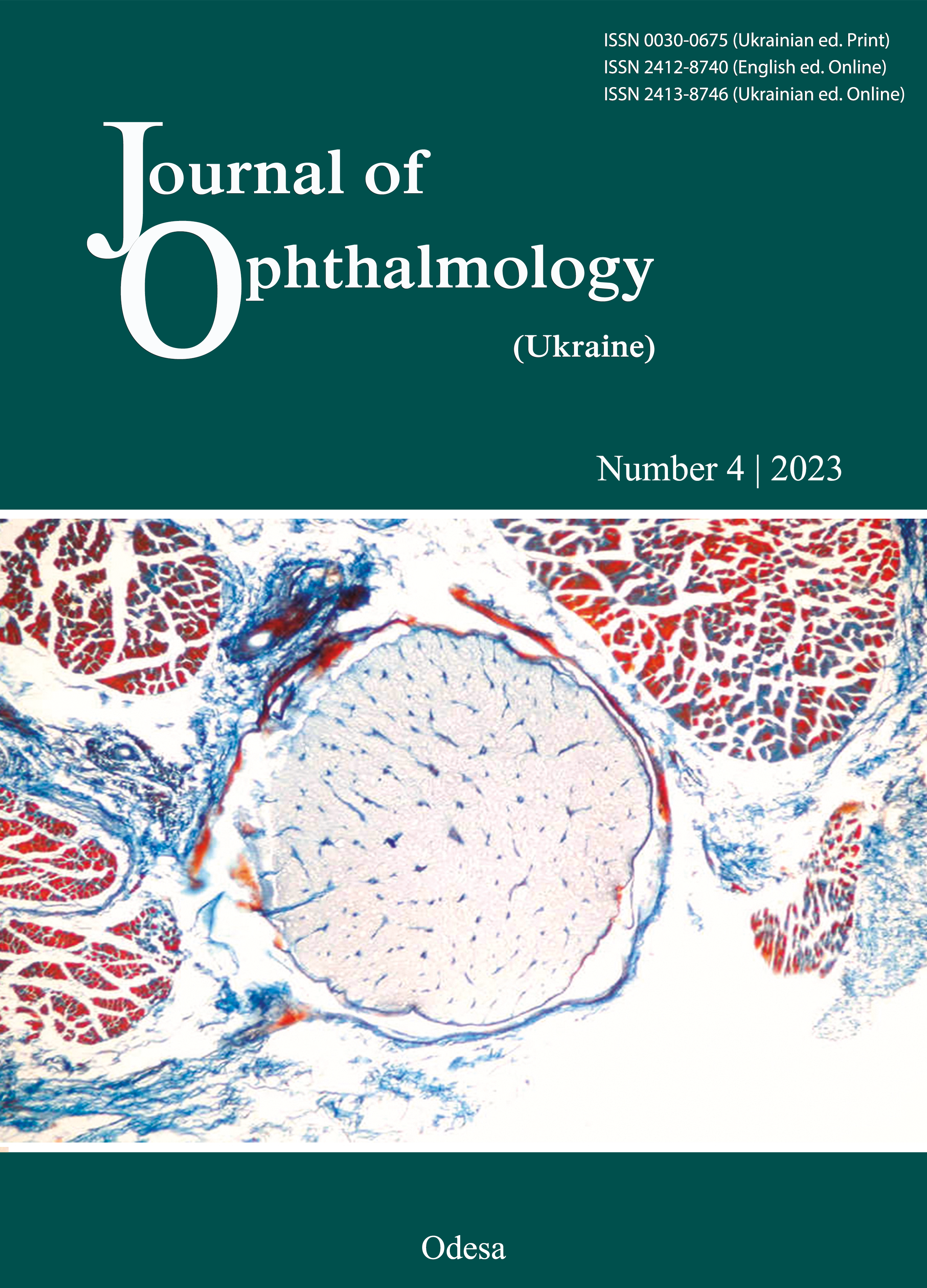Idiopathic congenital Horner Syndrome. Presentation of a case
DOI:
https://doi.org/10.31288/oftalmolzh202347980Keywords:
Horner syndrome, congenital, idiopathic, pediatricAbstract
Horner Syndrome results from an interruption of the sympathetic innervation of the eye. This pathway is a chain of three neurons which originate in the hypothalamus, travels down to spinal cord at the level of lower cervical and upper thoracic levels, then traverses the upper chest cavity traveling with the carotid artery, traverse the orbit to innervate pupillary sphincter and accessory muscles for eyelid retraction. The classic clinical triad is unilateral ptosis, miosis and anhidrosis.
There are many causes of Horner Syndrome which can be congenital o acquired. During the first year of life is most often idiopathic in 70%, but the others can be related to neuroblastoma, that’s why it is so important to recognize the cause of the syndrome in each patient. In this paper we describe a case report of congenital Horner syndrome, how the diagnosis was made, identification of the causing injury and differential diagnosis.
References
Khan Z, Bollu PC. Horner Syndrome. [Updated 2021 May 4]. In: StatPearls [Internet]. Treasure Island (FL): StatPearls Publishing; 2021 Jan. Available from: https://www.ncbi.nlm.nih.gov/books/NBK500000/
Braungart S, Craigie RJ, Farrelly P, Losty PD. Paediatric Horner's syndrome: is investigation for underlying malignancy always required? Arch Dis Child. 2019 Oct;104(10):984-987. https://doi.org/10.1136/archdischild-2019-317007
Barrea C, Vigouroux T, Karam J, Milet A, Vaessen S, Misson JP. Horner Syndrome in Children: A Clinical Condition with Serious Underlying Disease. Neuropediatrics. 2016 Aug;47(4):268-72. https://doi.org/10.1055/s-0036-1584085
Martin TJ. Horner Syndrome: A Clinical Review. ACS Chem Neurosci. 2018 Feb 21;9(2):177-186. https://doi.org/10.1021/acschemneuro.7b00405
Kanagalingam S, Miller NR. Horner syndrome: clinical perspectives. Eye Brain. 2015;7:35-46. Published 2015 Apr 10. https://doi.org/10.2147/EB.S63633
Downloads
Published
How to Cite
Issue
Section
License
Copyright (c) 2023 Garduno Vieyra L., Rua Martinez R., Rodriguez Mena N., De la Fuente I.

This work is licensed under a Creative Commons Attribution 4.0 International License.
This work is licensed under a Creative Commons Attribution 4.0 International (CC BY 4.0) that allows users to read, download, copy, distribute, print, search, or link to the full texts of the articles, or use them for any other lawful purpose, without asking prior permission from the publisher or the author as long as they cite the source.
COPYRIGHT NOTICE
Authors who publish in this journal agree to the following terms:
- Authors hold copyright immediately after publication of their works and retain publishing rights without any restrictions.
- The copyright commencement date complies the publication date of the issue, where the article is included in.
DEPOSIT POLICY
- Authors are permitted and encouraged to post their work online (e.g., in institutional repositories or on their website) during the editorial process, as it can lead to productive exchanges, as well as earlier and greater citation of published work.
- Authors are able to enter into separate, additional contractual arrangements for the non-exclusive distribution of the journal's published version of the work with an acknowledgement of its initial publication in this journal.
- Post-print (post-refereeing manuscript version) and publisher's PDF-version self-archiving is allowed.
- Archiving the pre-print (pre-refereeing manuscript version) not allowed.












